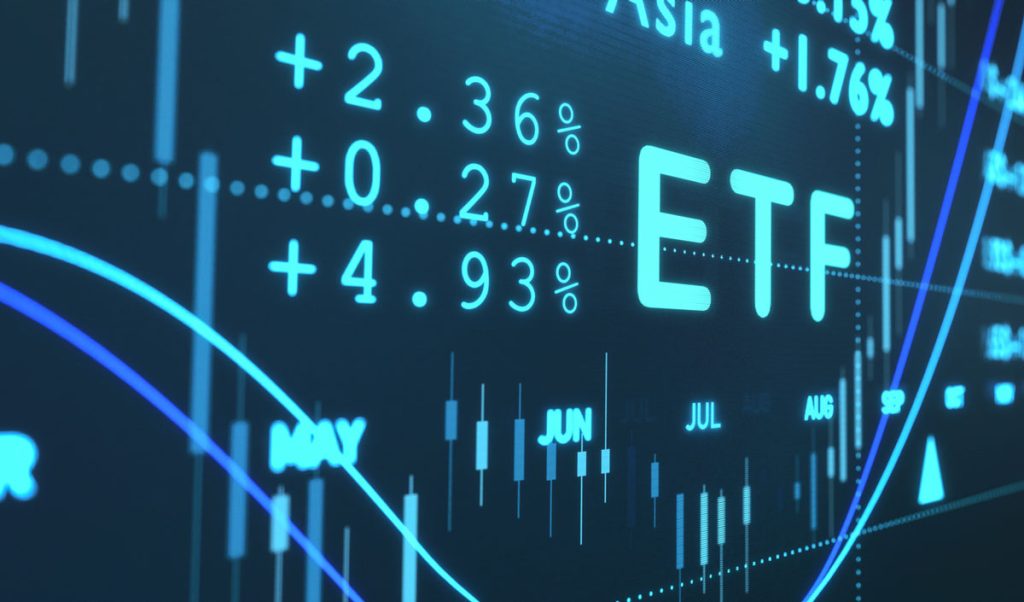Introduction: The Strategic Power of Sector-Specific ETFs
Exchange-Traded Funds (ETFs) have long been lauded for their low costs, liquidity, and accessibility, making them a favorite tool among both retail and institutional investors. But one of the most powerful and underappreciated applications of ETFs lies in sector investing. Sector-specific ETFs allow investors to target particular areas of the economy—technology, healthcare, energy, financials, and beyond—enabling strategic plays based on market cycles, economic indicators, and geopolitical developments. In today’s rapidly shifting global environment, with persistent inflation pressures, central bank pivots, AI-driven disruptions, and energy transitions shaping market behavior, leveraging sector ETFs for precision exposure has never been more critical.
In this article, we’ll break down the benefits of sector-specific ETFs, how they can be used to align with macroeconomic trends, and highlight several top-performing ETFs based on current market developments. Whether you’re hedging risks, chasing momentum, or rebalancing for long-term growth, sector ETFs offer a streamlined way to implement a tactical or thematic investment strategy.
The Benefits of Sector-Specific ETFs
- Targeted Exposure Without Stock-Picking Risk
Sector ETFs offer an efficient way to gain exposure to an entire industry without the risk or time commitment of researching individual stocks. For example, investing in the Technology Select Sector SPDR Fund (XLK) provides exposure to major tech names like Apple, Microsoft, and NVIDIA—all with a single trade. This reduces the chance of idiosyncratic risk (i.e., poor performance by one company) damaging your returns while still allowing participation in sector-level growth. - Tactical Asset Allocation
Sector ETFs are invaluable for implementing tactical asset allocation strategies. Investors can overweight sectors expected to outperform in the near term while underweighting or avoiding sectors facing headwinds. For instance, when interest rates are rising, financial sector ETFs (like XLF) typically benefit, while real estate and utilities may underperform due to sensitivity to borrowing costs. - Efficient Thematic Plays
For investors looking to ride structural trends—such as green energy, AI, cybersecurity, or biotech—sector ETFs offer thematic exposure with broad diversification. The Global X Robotics & Artificial Intelligence ETF (BOTZ) or iShares Global Clean Energy ETF (ICLN) are examples of vehicles allowing investors to gain entry into fast-growing, future-forward sectors. - Cost and Liquidity Advantages
Most sector ETFs are extremely liquid, offering tight bid-ask spreads and low expense ratios. This makes them ideal for both long-term investing and short-term trading. Major providers like SPDR, iShares, and Vanguard offer sector ETFs with fees as low as 0.10%, a fraction of what active funds charge, and with greater transparency. - Portfolio Diversification and Risk Management
By allocating across sectors, investors can better diversify their portfolios and reduce systemic risk. Sector ETFs also allow for hedging purposes—for instance, buying an inverse ETF or reducing exposure to a specific industry expected to decline—without having to sell core holdings.

Current Market Context: What’s Driving Sector Rotation in 2025?
Understanding macroeconomic and market trends is essential to making informed ETF sector bets. Here are several major developments shaping investor behavior in 2025:
- The AI Boom Continues: The continued rollout of generative AI and AI-integrated software across multiple industries is fueling extraordinary growth in the technology sector. Semiconductors, cloud infrastructure, and enterprise software companies are experiencing surging demand.
- Fed Holds Steady as Inflation Eases: After a turbulent 2023–2024, the Federal Reserve in early 2025 has held rates steady amid signs of cooling inflation, but remains hawkish. This has strengthened financial sector profits as net interest margins stabilize.
- Green Energy Transition Accelerates: Governments across Europe and Asia have rolled out fresh incentives and subsidies for clean energy investments, especially solar, wind, and battery storage, spurring growth in the ESG and renewable sectors.
- Healthcare Innovation Resurgence: Breakthroughs in gene therapy, weight-loss drugs, and personalized medicine have rekindled investor interest in biotech and healthcare funds, especially after major M&A announcements in early Q1 2025.
- Commodity Volatility and Energy Realignment: Geopolitical tension in the Middle East and unexpected production cuts by OPEC have caused a spike in oil and gas prices, pushing energy stocks back into the spotlight.
Top Sector ETFs to Consider Based on Current Trends
- Technology: XLK, SMH, BOTZ
The tech sector continues to outperform, driven by AI adoption, digital transformation, and strong balance sheets. The Technology Select Sector SPDR Fund (XLK) offers broad exposure to U.S. tech giants. For more focused plays, VanEck Semiconductor ETF (SMH) targets chipmakers like NVIDIA and AMD, while Global X Robotics & Artificial Intelligence ETF (BOTZ) captures the next wave of automation and AI. - Financials: XLF, KBE
With the Fed pausing rate hikes but not cutting, banks are enjoying steady income from loans. The Financial Select Sector SPDR Fund (XLF) gives access to banking and insurance giants, while SPDR S&P Bank ETF (KBE) provides a more equal-weighted approach to U.S. regional banks—attractive if you’re betting on a soft landing and continued consumer strength. - Healthcare & Biotech: XLV, IBB, XBI
Healthcare is showing defensive resilience alongside explosive innovation. The Health Care Select Sector SPDR Fund (XLV) covers pharmaceutical majors and healthcare service providers. For biotech exposure, consider the iShares Nasdaq Biotechnology ETF (IBB) or the SPDR S&P Biotech ETF (XBI), especially following 2025’s early FDA approvals and weight-loss drug dominance. - Energy & Clean Tech: XLE, ICLN, TAN
Energy has roared back with oil prices on the rise, making the Energy Select Sector SPDR Fund (XLE) a high-dividend, inflation-hedging play. Meanwhile, green energy is regaining momentum with government incentives—iShares Global Clean Energy ETF (ICLN) and Invesco Solar ETF (TAN) are popular vehicles to ride the renewables revolution. - Consumer Discretionary: XLY, VCR
Despite economic headwinds, the U.S. consumer remains surprisingly resilient in 2025, especially in the luxury and travel segments. The Consumer Discretionary Select Sector SPDR Fund (XLY) includes Amazon, Tesla, and other demand-sensitive names, while Vanguard Consumer Discretionary ETF (VCR) offers broader diversification. - Industrials & Infrastructure: XLI, PAVE
Infrastructure spending under new fiscal packages in the U.S. and EU has lifted the outlook for construction, machinery, and logistics firms. The Industrial Select Sector SPDR Fund (XLI) benefits from these tailwinds, while the Global X U.S. Infrastructure Development ETF (PAVE) offers targeted exposure to infrastructure suppliers and contractors.
Tips for Using Sector ETFs Effectively
- Watch for Rotation Signals
Track economic data (GDP growth, inflation, PMI), earnings trends, and Fed policy updates. Sector performance often rotates based on where we are in the economic cycle. Tech and consumer discretionary often lead in recovery; energy and materials thrive in inflationary booms; utilities and healthcare shine in recessions. - Use Technical Indicators to Time Entries
Even long-term investors benefit from technical analysis when it comes to sector ETFs. Moving averages, RSI, and MACD indicators can help identify overbought or oversold conditions, enhancing entry points. For example, if SMH breaks a long-term resistance on high volume, it may indicate a bullish run for semiconductors. - Consider Equal vs. Cap-Weighted Structures
Cap-weighted ETFs are dominated by mega-cap firms (e.g., Apple, Microsoft in XLK). If you’re looking for broader sector exposure or to avoid concentration risk, consider equal-weight ETFs (e.g., RSP for the S&P 500 or RYT for tech), which give smaller firms more weight. - Blend Cyclical and Defensive Sectors
Balancing between cyclical sectors (like industrials and discretionary) and defensives (like utilities and healthcare) creates a more resilient portfolio. This diversification helps buffer performance during economic transitions or shocks. - Rebalance Quarterly
Sector performance can change rapidly. Rebalancing ensures your allocations remain aligned with your macro thesis and risk tolerance. Some sectors may become overvalued or underweight depending on market momentum and capital flows.
Risks and Considerations
While sector ETFs offer precision and efficiency, they also carry concentration risk. A bet on one sector can go awry if macro trends reverse. Liquidity varies across funds—smaller or thematic ETFs may have wider bid-ask spreads. Additionally, sector classification may not always reflect emerging trends accurately; for example, some AI-heavy companies may still be classified as industrials or discretionary.
Tax efficiency and dividend policies also differ across funds. Some ETFs pay quarterly distributions, while others reinvest income, which can impact taxable income for investors.
Conclusion: Sector ETFs for Tactical and Strategic Allocation
In an investing world increasingly shaped by fast-evolving macro trends, global shocks, and innovation, sector-specific ETFs offer a flexible and effective tool for building responsive portfolios. Whether you’re capitalizing on the AI boom, hedging inflation with energy, or positioning for a biotech breakout, ETFs provide the means to express your investment outlook with speed and precision. By understanding the market context, evaluating sector rotations, and aligning exposure with your investment horizon, you can use sector ETFs not just as passive tools—but as active instruments for wealth building in a complex, opportunity-rich environment.













































